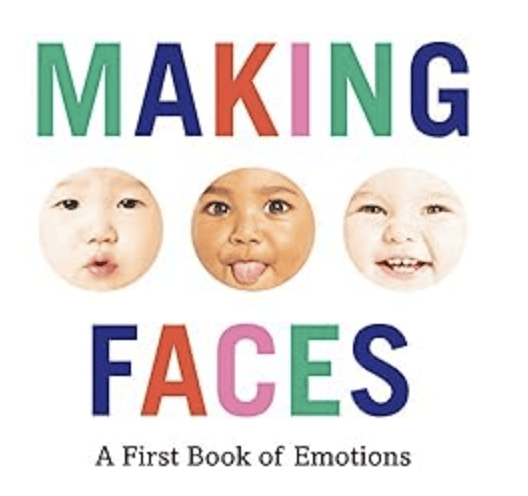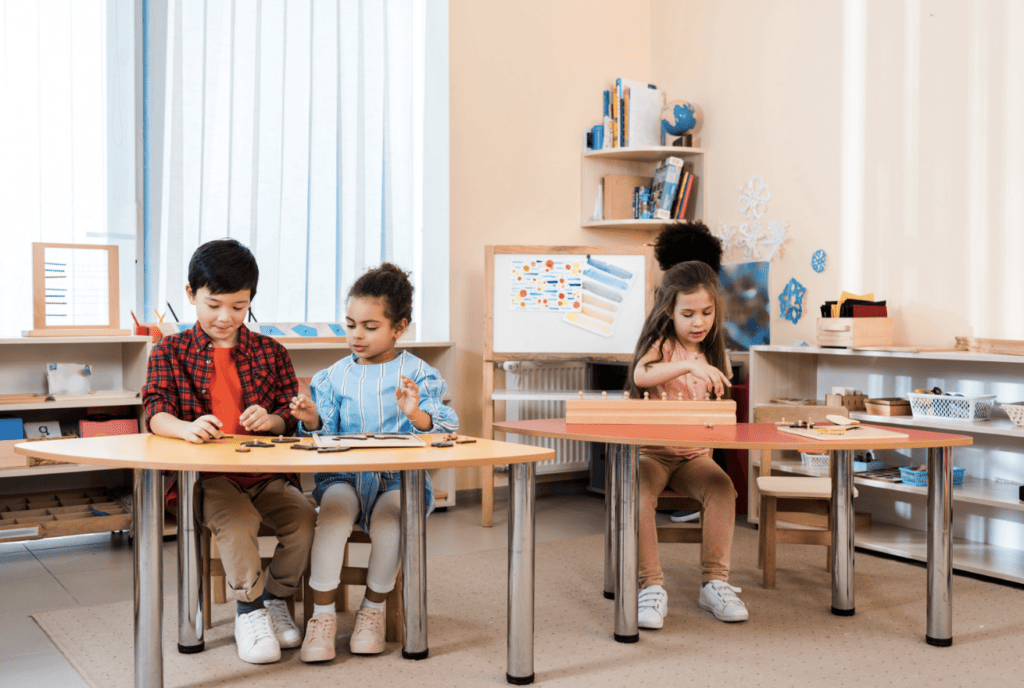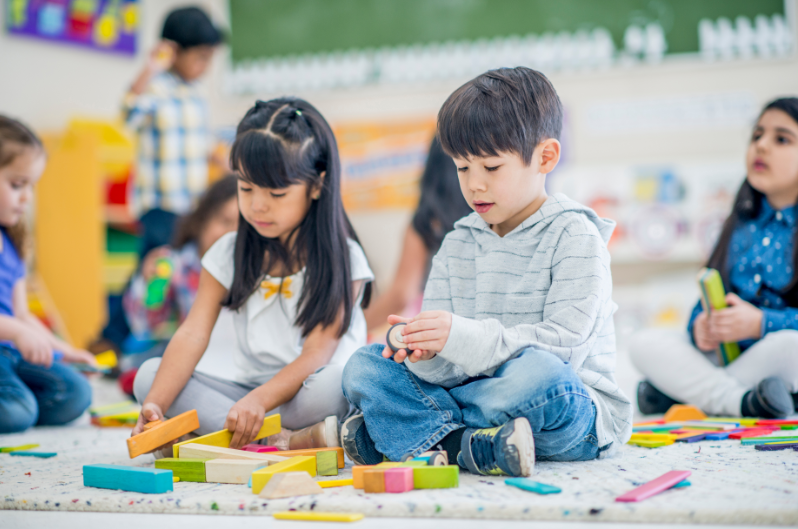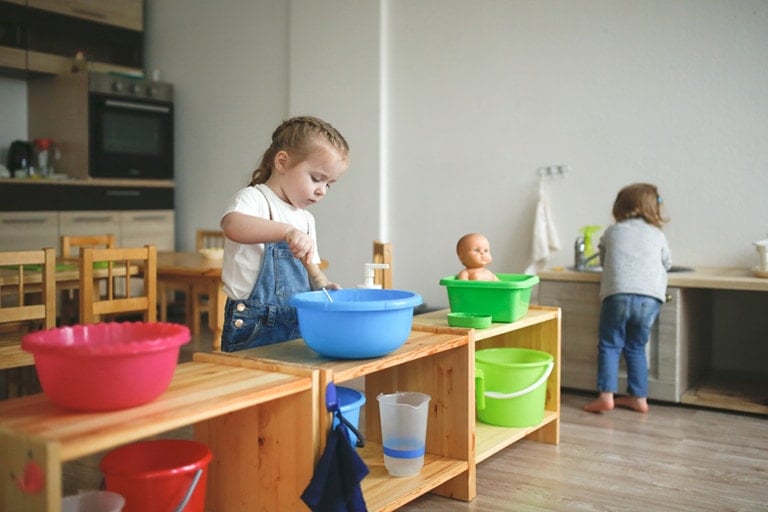Preparing our children for school and ensuring their academic success is crucial for parents and educators. Introducing effective prewriting activities can significantly improve their writing skills and readiness for school. This is where the
This article will explore different
On This Page…
- Unveiling the Montessori Approach: How This Method Enhances Writing Skills
- Montessori Pre Writing Activities for School Readiness
- Infusing These Preschool Writing Activities into Everyday Life
- Fostering Prewriting Activities: A Partnership Between Parents and Educators
- A Pathway for Future Academic Achievements
- Final Thoughts:
Unveiling the Montessori Approach: How This Method Enhances Writing Skills
Understanding different educational methods is vital in fostering a child’s learning and development. Among these methods, the
Embracing Hands-on Learning: Montessori ‘s Unique Approach
The
Montessori Writing Exercises: The Role in Cognitive Development
Key to the effectiveness of the
The Importance of Writing in Children’s Learning and Expression
As we discern, writing is much more than a mere academic task. It’s a vital medium through which children convey their thoughts, express creativity, and communicate with precision. Whether capturing their vibrant imaginations on paper or forming logical arguments, writing allows children to integrate complex language elements into their thought processes. Through the
The Crucial Role of Prewriting Activities in Montessori Education
Prewriting activities serve as stepping stones for children in their learning journey. These activities help develop foundational writing skills, paving the way for more advanced tasks in a school setting. By working on these prewriting exercises, children become familiar with handwriting mechanics, letter formations, and essential language concepts that ensure a smooth transition to school.
Montessori Pre Writing Activities for School Readiness
Here are the
- Name Tracing: This activity combines lessons in language and writing. Create name cards for your child and encourage them to trace the letters of their name. This familiarizes them with the alphabet while also providing a personal connection.
- Animal Outlines: Consider drawing various animal outlines if your child enjoys animals. Ask your child to trace these outlines, gradually increasing the complexity as their skills advance.
- Letter Construction: Using materials like playdough or pipe cleaners, guide your child in shaping letters. This hands-on activity can significantly enhance their ability to recognize and form letters.
- Sandpaper Letters:
Montessori letters are sensory prewriting activities and excellent tools for introducing the alphabet. Let your child trace these letters repeatedly, thus using their sense of touch and sight to learn each letter’s shape.
- Drawing in Sand or Salt: Fill a small tray with sand or salt. Please encourage your child to use their fingers or utensils to write letters and make shapes. This creates a captivating tactile experience and practices forming letters.
- Prewriting Stroke Practice: Print or draw strokes like vertical lines, horizontal lines, circles, and crosses on paper. Please have your child trace them to provide basic stroke practice for letter formation.
- Chalkboard Activities: A simple chalkboard can offer unlimited prewriting practice. Let your child scribble, write, and draw, promoting creativity alongside fine motor skills.
- Cloth-Pin Activities: This activity enhances the fine motor skills necessary for writing. Ask your child to clip and unclip clothespins onto some marked regions. It’s a simple yet effective exercise for strengthening hand muscles.
- Metal Insets: With this activity, children use metal stencils of shapes drawn within a square frame. They trace the shapes with a pencil and fill the drawing with colored pencils. This exercise helps refine hand-eye coordination, pencil grip, and hand control while writing.
- Straight and Curved Line Practice: Using sand, a chalkboard, or paper, have your child practice drawing straight lines and various curved lines. This will familiarize them with basic line shapes essential for forming letters and numbers.
Each activity aims to promote school readiness by enhancing children’s prewriting skills in a fun, engaging manner. As crucial as it is to employ these activities, always remember that each child learns at their own pace, and their journey should be appreciated and savored.
Infusing These Preschool Writing Activities into Everyday Life
Practical Tips for Seamless Integration
A practical and efficient approach to integrating
The Essential Role of Consistency and Patience
Consistency and patience are virtues in this context and essential elements for success. Consistency in maintaining a routine for these activities ensures continual learning and progress. Patience, on your part, is crucial as children learn and grow at their own pace. It makes the learning environment more comforting for them. Maintaining a calm and patient demeanor while consistently guiding your child through their prewriting tasks can result in more productive and stress-free learning sessions.
Overcoming Common Challenges with Handy Solutions
Different challenges may come knocking, but most are surmountable with effective strategies. If your child seems uninterested, consider integrating their interests into the activities. For example, if they like nature, use it to your advantage in writing exercises. Lack of progress could be another challenge; ensure you’re not rushing. Please stick to one activity until your child has mastered it, then gradually move on. Always remember, it’s about more than fast progression but solid and meaningful learning.
Fostering Prewriting Activities: A Partnership Between Parents and Educators
Facilitating prewriting activities as part of a child’s Montessori education is a task that demands a deep level of cooperation and commitment from both parents and educators. These key figures play an indispensable role in introducing children to these educational tasks, going beyond merely setting them up. Their roles encompass guiding the children step-by-step through the dynamic activities, painting a complete picture of the experiential learning the
Actively engaging in a child’s learning process, educators and parents form a synergic team, contributing unique insights to nurture a child’s development. Their prime focus goes beyond technicalities, extending to providing the right blend of guidance and encouragement. They create a supportive environment where children are motivated and guided and feel secure to explore, experiment, and make mistakes. Consequently, this approach cultivates success in skill acquisition and, essentially, in a learner’s journey in the
A Pathway for Future Academic Achievements
Entering the realm of
These exercises introduce the child to the world of alphabets and syntax and instill a discipline in thinking and expressing, which is highly valued in the academic realm. Pre writing activities for preschoolers in the
Final Thoughts:
Wrapping up, it is evident that
Acknowledging the importance of this
Next, check out some more great activities for:
- 3 to 6 month olds
- 6 to 9 month olds
- 1 year olds
- 2 year olds
- 3 year olds
- 4 to 5 year olds
- Music and movement
- Fun in the outdoors
- Sensory tables
- Establishing routines
- Supporting pre-writing
- Those with dementia
Author bio
Andrea Gibbs is the Content Manager at SpringHive Web Agency, where she helps create content for their clients’ blogs and websites. She is currently a blog contributor at Montessori Academy, a blog dedicated to helping parents with the ins and outs of parenting children within the







